Early peas are one of the greatest gifts of the spring garden! It seems impossible that such a delicate plant with its sprawling vines and beautiful flowers would manage to thrive in the harsh weather of spring, but it does every year.
And it rewards us for putting it out in the chilly, wet weather of spring with loads of crisp, sweet peas to enjoy! Let us show you how to get a great crop of garden peas this year.
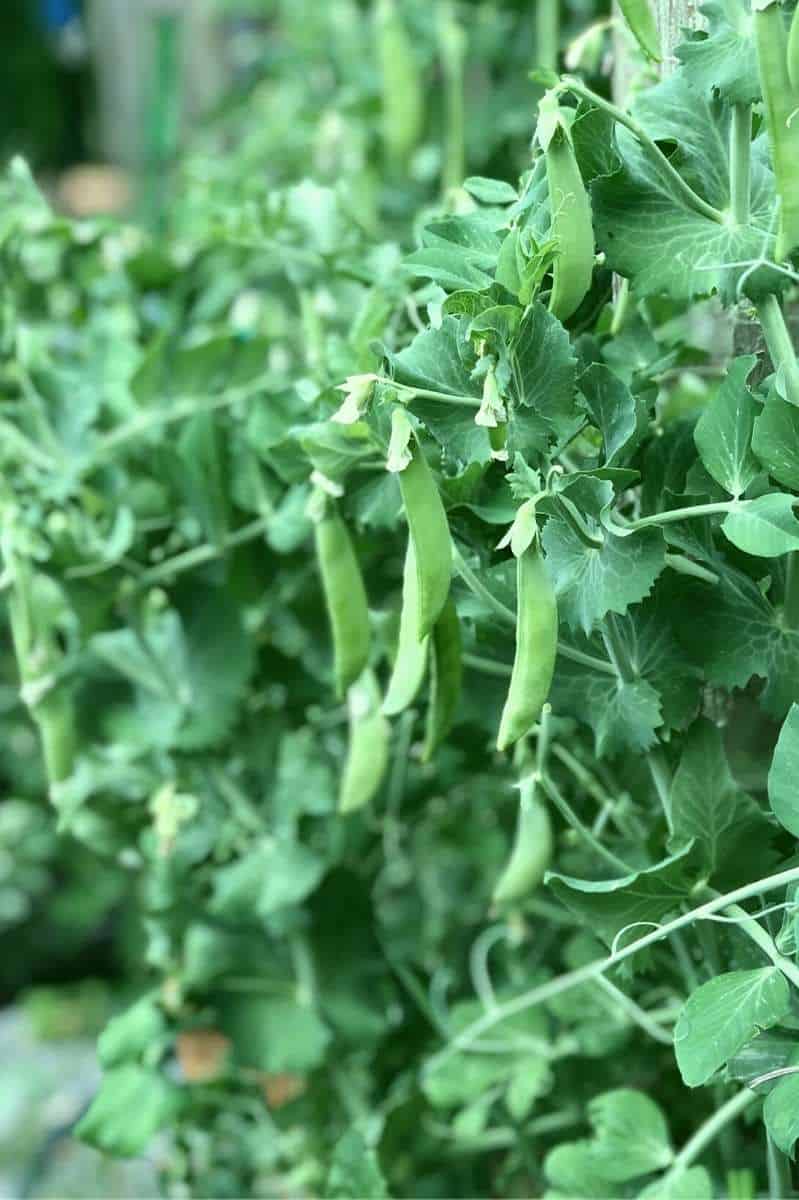
Table of Contents
What’s the difference between snow peas, sugar snap peas, and shelling peas?
There are three main types of peas you’ll find in a seed catalog: snow peas, snap peas, and shelling or English peas. Learn more about the types of peas here.
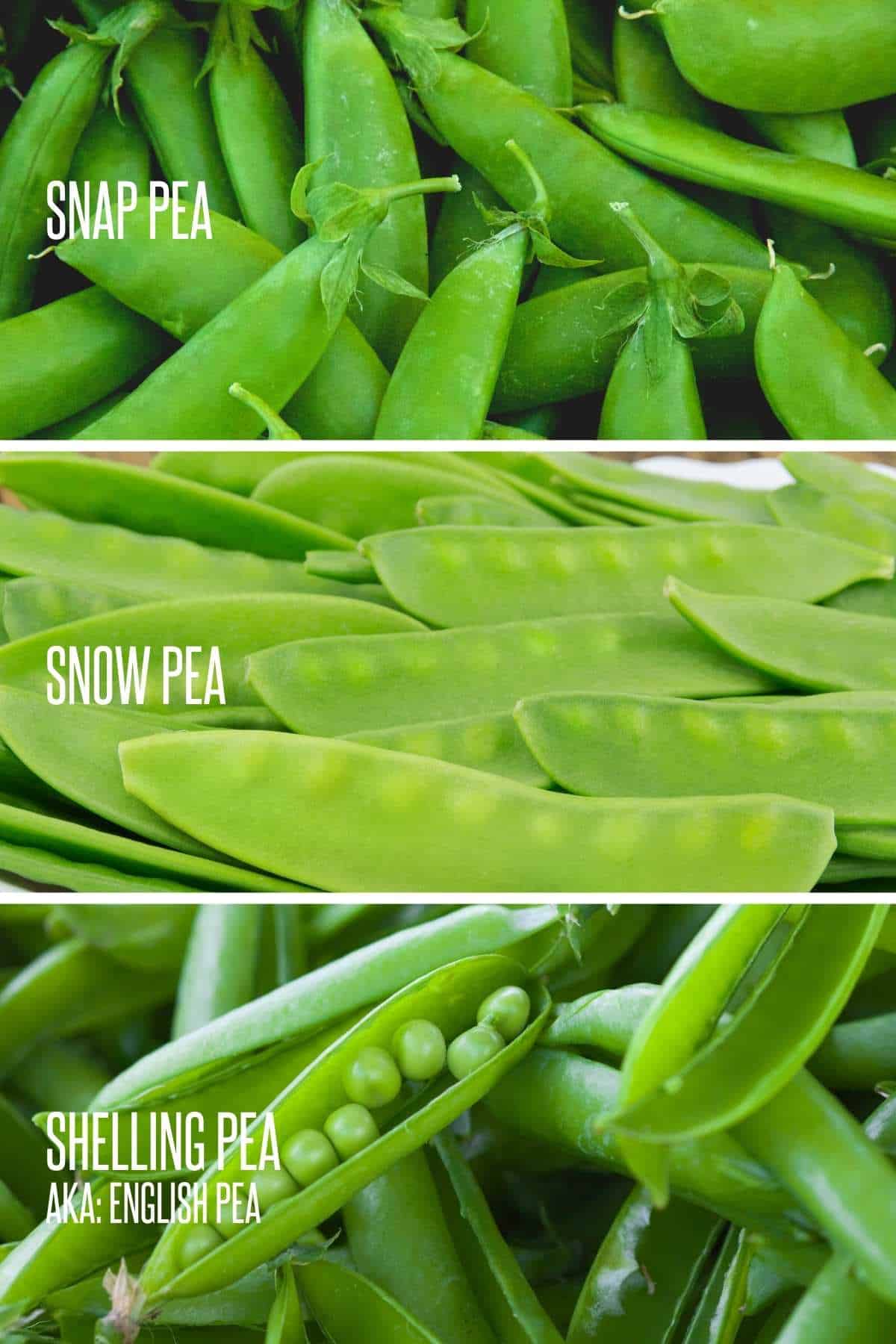
How many peas will one plant produce?
This will depend dramatically on the variety you choose and the type of pea you are growing. Most seed packets or seed catalogs will give you a more specific idea about the type of pea you are growing.
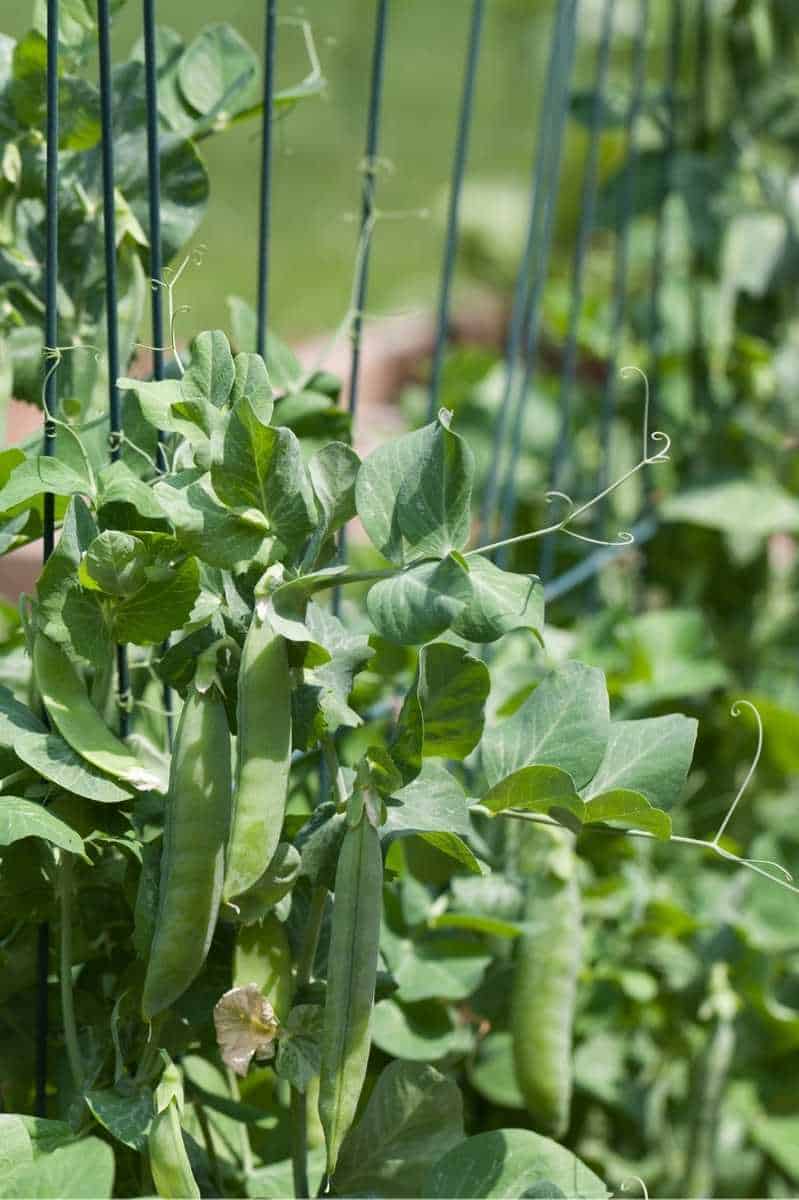
Do peas need to climb?
Most varieties of peas will be more productive (and easier to harvest!) if they have a trellis to climb. You’ll want to prepare your trellis or other support (we grow peas up our garden fence) when you first plant your peas, as the plants will release tendrils for climbing earlier than you’d think!
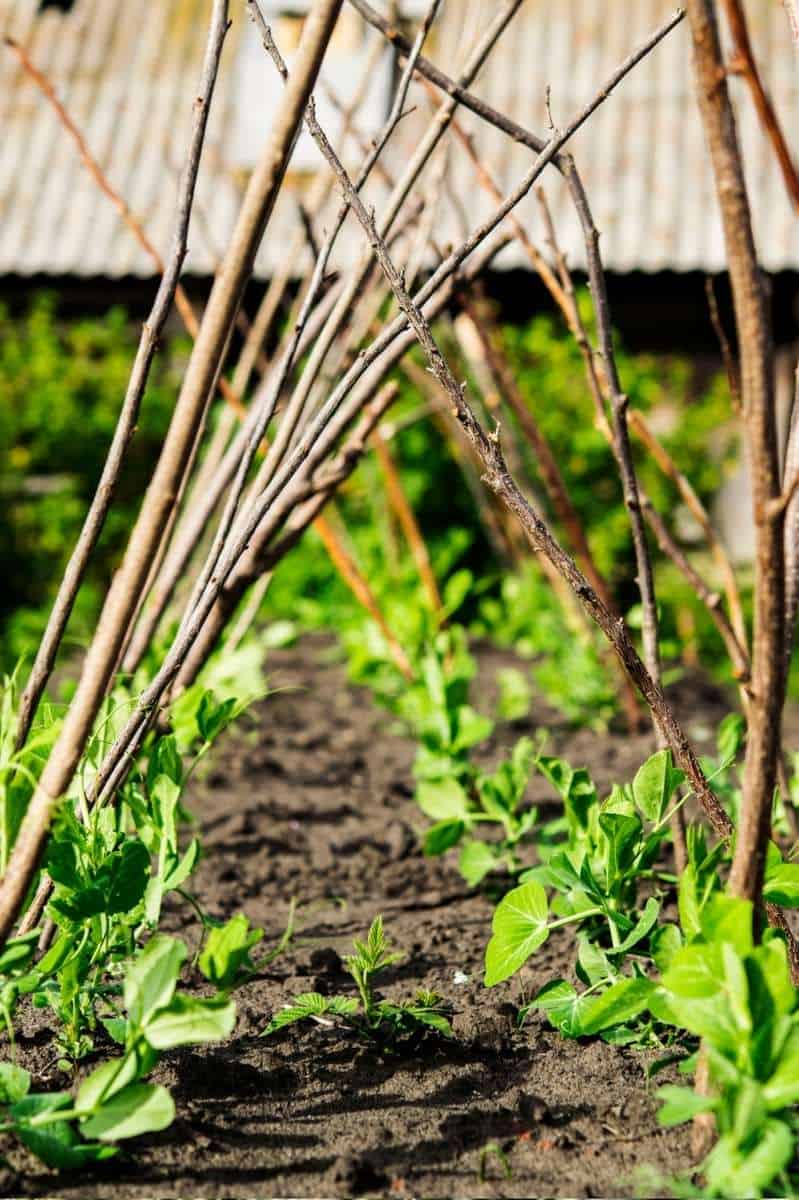
Pea vines can grow up to eight feet tall, so make sure you check your seed packet for the mature height to make sure you have a tall enough support!
If you are growing in containers or otherwise don’t want to put in a trellis, there are some bush or short pea varieties that grow more upright and don’t need to climb. Your seed packet should tell you what you have!
Download Printable Peas Growing Guide »
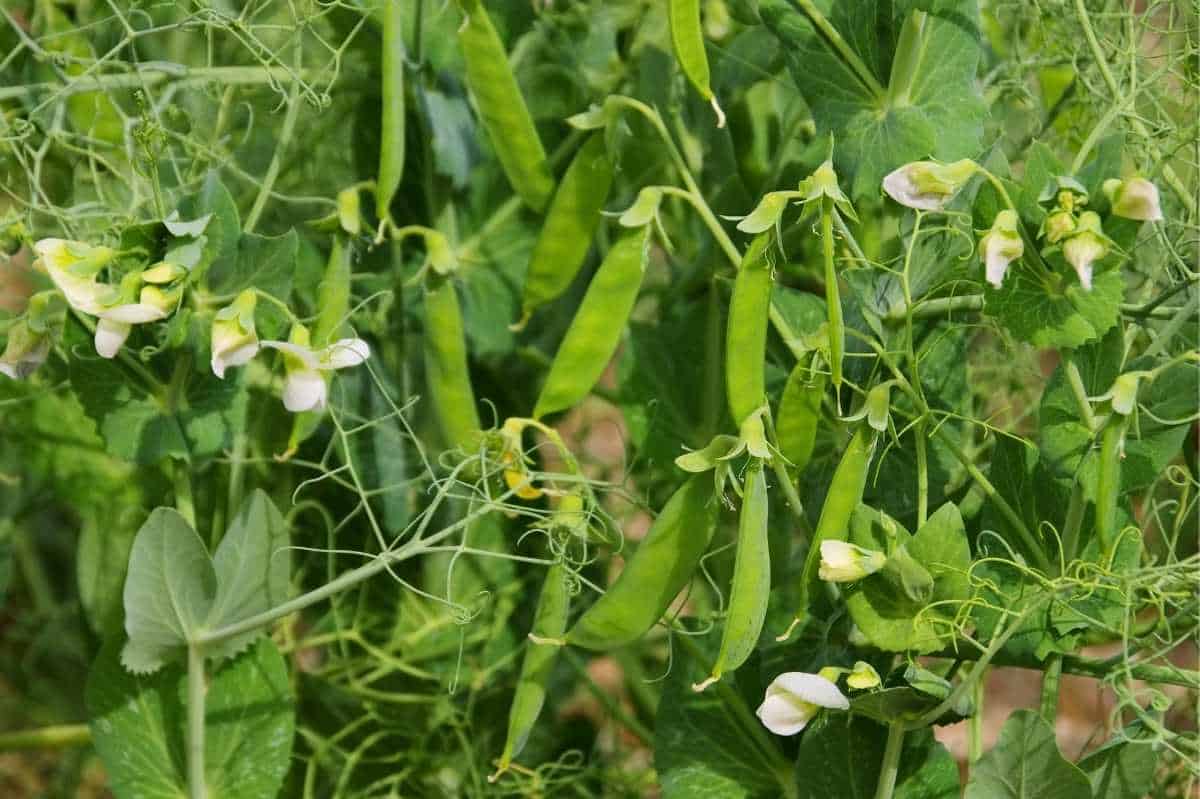
How many days does a pea plant take to grow?
Most peas will hit maturity about 60-70 days from planting. They will be one of your earliest spring harvests!
How do I plant peas?
We generally recommend direct sowing pea seeds right into the soil, instead of starting with seedlings. The roots are just too shallow and delicate to tolerate transplanting well.
For best germination, you’ll need to inoculate the seeds with rhizobia bacteria—but don’t worry, this is simple to do! It usually involves wetting the seeds and coating them with an easy-to-find inoculant. You can read more about inoculating your seeds and planting them in the soil in our page on how to plant peas.

To Plant Peas from Seed:
- Plant when soil is workable (which means not frozen and not sopping wet) in early spring.
- If peas or legumes have not been planted in this area before, inoculate your pea seeds with rhizobia bacteria prior to sowing seeds.
- Push the seeds about 1 inch below the soil surface, and then cover well.
- Seeds will emerge in 5-14 days, depending on the conditions.
Growfully Protip
Some folks have better germination results soaking their pea seeds in water overnight before they sow their seeds.
Can I grow peas in containers?
Sure can! Peas actually tend to enjoy being a little bit crowded, making them an excellent option for when you don’t have a lot of room to spread out. We recommend growing vertically if you are in containers to maximize your yield. Set up a pea trellis in your container and choose a tall variety.

Helping your pea plants thrive:
What kind of soil do I need?
Peas love sandy or loamy soil with good drainage, but they can thrive in pretty much any soil other than very heavy clay. They also need lots of phosphorus and potassium, so be sure to amend your soil with compost before planting.
Growfully Protip
Do not add too much nitrogen to your soil. It will make your pea plants lush and green, but will reduce pea yields.
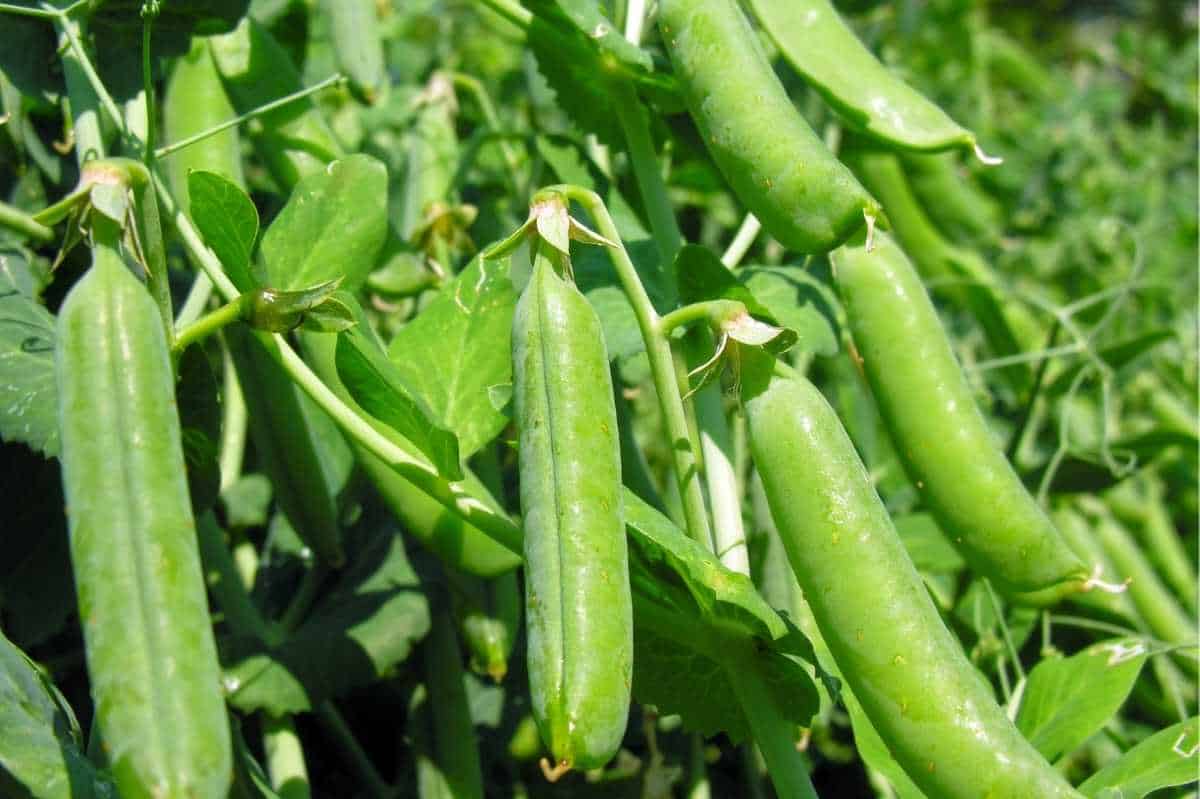
Do peas need full sun to grow?
For best results, peas need at least six to eight hours of full sun exposure daily. Pea plants will tolerate partial shade (especially in the hottest part of the day), but they will grow slower.
When should I fertilize my peas?
Peas fertilizer needs are quite low because like all peas and legumes, garden peas will fix nitrogen to the soil—meaning they’ll take nitrogen in the air and convert it into useable nitrogen in the soil. We recommend amending your pea bed with a good amount of compost and organic matter before planting, and then not fertilizing any more during the growing season.
Do peas need mulch?
Yes! Peas have relatively shallow roots, so not only will mulch help the soil retain moisture, but it will also protect the fragile roots. When the plants are about two inches tall, add a layer of fluffy mulch, such as straw, chopped leaves, or pine shavings.
How do I weed around pea plants?
Because of their shallow roots, you’ll need to be careful when weeding around your pea plants. We don’t recommend pulling weeds, as it might disturb the roots. Instead, try using a sharp surface hoe. Another option is to take your scissors out and clip the weeds off at the surface.
Growfully Protip
A good layer of mulch will also help prevent weed growth around your pea plants.
Should peas be part of a crop rotation?
It’s important to practice crop rotation throughout your garden, but peas are a particularly good candidate for spreading around the garden. Peas are a nitrogen-fixing plant, meaning they absorb nitrogen from the air, and then eventually release it into the soil through their roots. This makes pea plants excellent for soil fertility! In fact, many cover crops (crops designed specifically to increase soil fertility or condition) are from the pea and legume family!

Pea plants do this thanks to rhizobia bacteria, which convert the nitrogen in the air into usable nitrogen in the soil. The presence of rhizobia bacteria help increase seed germination, improve flavor, and increase yields.
Take advantage of the nitrogen-fixing properties of peas by planting a non-nitrogen fixing plant next in the bed. Skip other peas or legumes, and instead plant something else.
What should not be planted with peas?
Avoid planting other pea or legume plants with garden peas. Plants in the allium family (onion, garlic, leeks, shallots, chives) are not good companions for peas because they stunt the growth of peas.
What can I plant with peas?
Peas are great companion plants with vegetables that like a little extra nitrogen and could use some shade at the peak of the day. Spinach, lettuce, and radishes can all thrive near pea plants.
To keep aphids and other pests off your peas, you can also grow aromatic herbs and flowers near your pea plants. Cilantro, mint, sage, and marigold will all help repel pests.
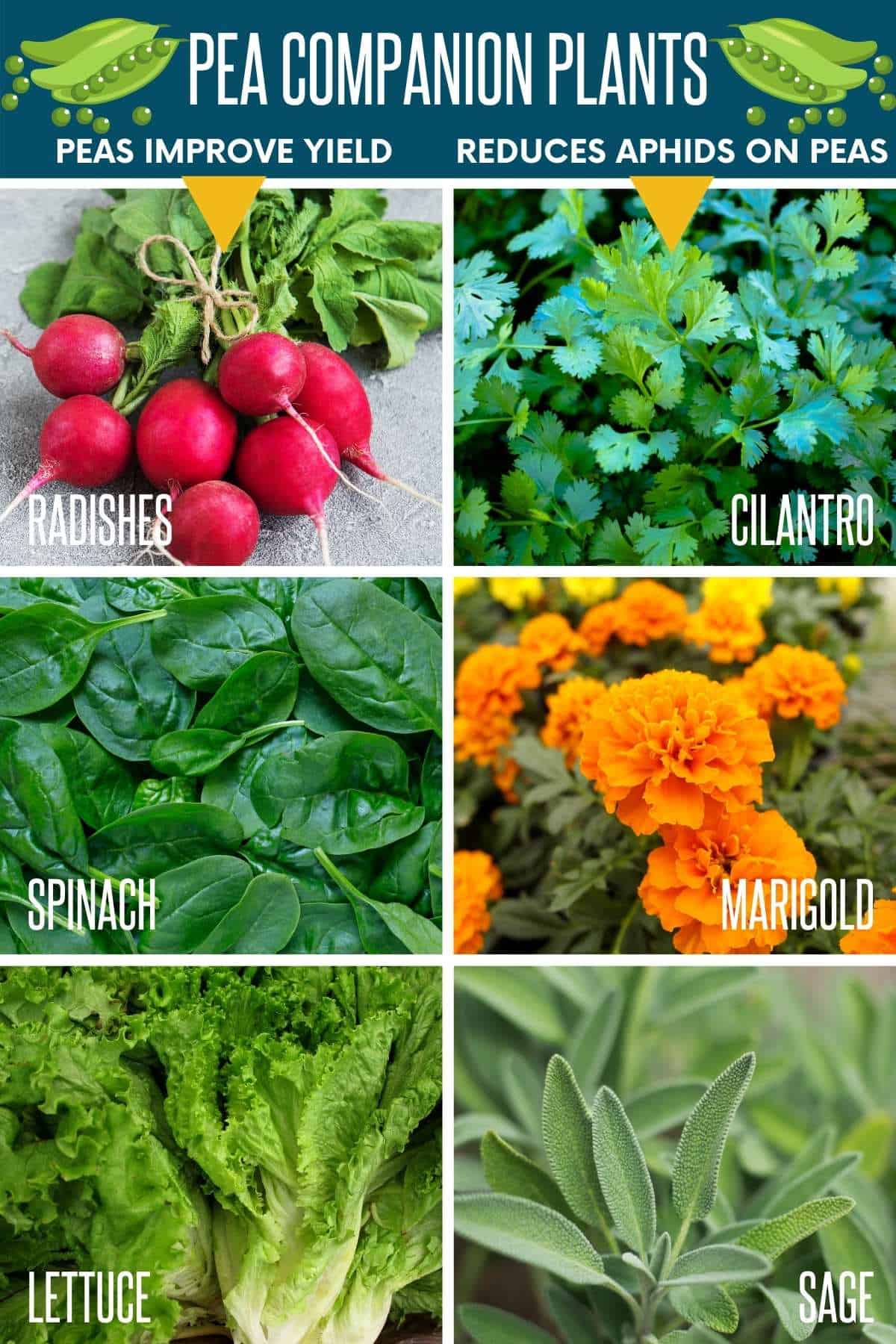
Troubleshooting Problems Growing Peas
Why are my peas not growing?
Peas can be pretty particular about the weather. If your weather warms up too fast, it might stunt the growth of your pea plants. If it’s too chilly, your pea plants might grow too slowly.
What’s that white powdery-looking stuff on the leaves?
It sounds like you have powdery mildew—the most common disease that can take hold of pea plants. Make sure there is plenty of air circulation around your peas (a trellis or other support is great for this), try to water at the roots to keep the leaves dry, and avoid overwatering.
Growfully Protip
Pea plants that are overfertilized tend to succumb to powdery mildew more often. No need to fertilize pea plants during the growing season. Excess nitrogen can also cause fusarium wilt—a disease that causes the leaves to wilt and the entire plant to eventually die.
Powdery mildew typically isn’t something to be concerned about as long as the plant still looks mostly healthy and the peas themselves are untouched.
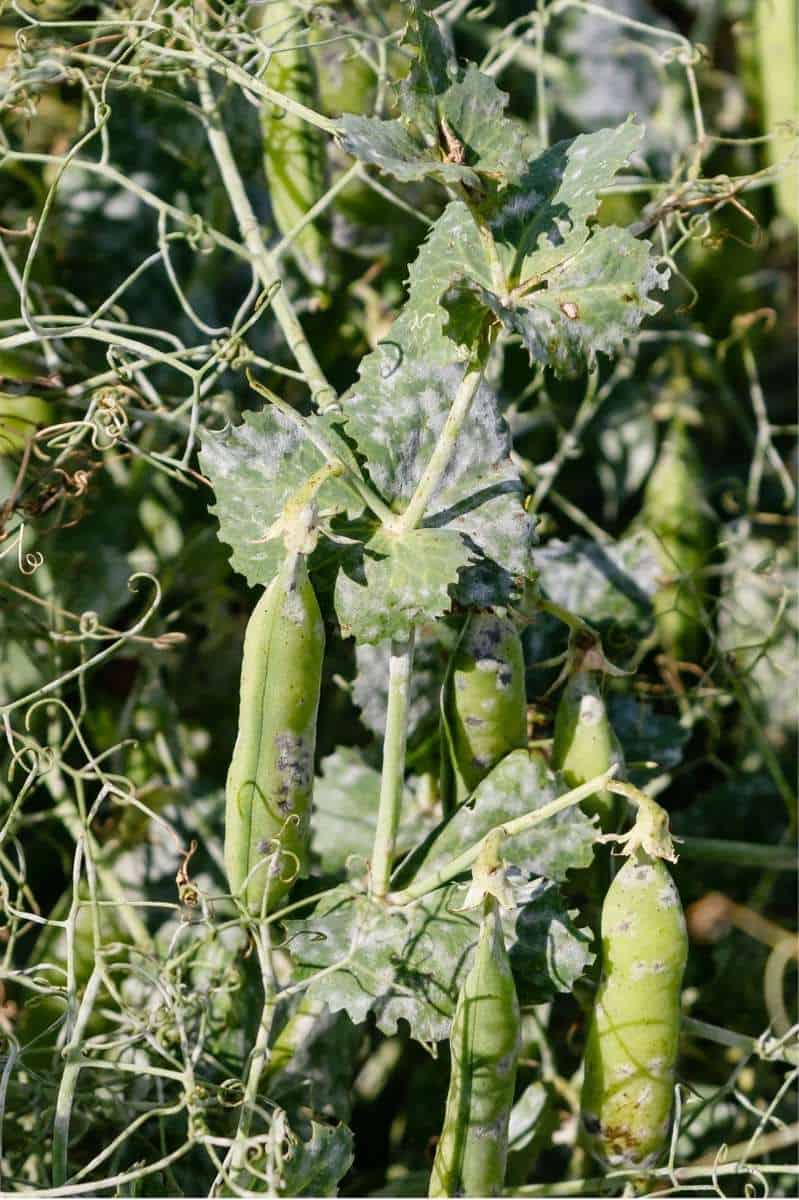
Once the plant has been overtaken with the mildew, you can spray with an organic fungicide (like neem oil or copper oil). However, we highly recommend instead considering just destroying the pea plants. Sprays (even organic sprays) are not without their risks to pollinators and soil health, and for a short-lived crop like peas, it can seem overkill to spray them to just get a couple more weeks of pea harvests.
Growfully Protip
Planting disease-resistant varieties (like Sugar Ann) can help avoid your chances of powdery mildew and fusarium wilt.
My peas are covered in small green bugs!
Those would be aphids. If they are just starting to infest your plants, you can blast them away with a spray of the garden hose. But for larger infestations that aren’t controlled with just the hose, you can add a dusting of diatomaceous earth (DE) or a spray of insecticidal soap.
Growfully Protip
Do not use DE or insecticidal soap when plants are in bloom! While it will help take care of aphid infestations, it can also hurt pollinators like bees.

Download Printable Peas Growing Guide »

How to Grow Peas
Materials
Tools
Instructions


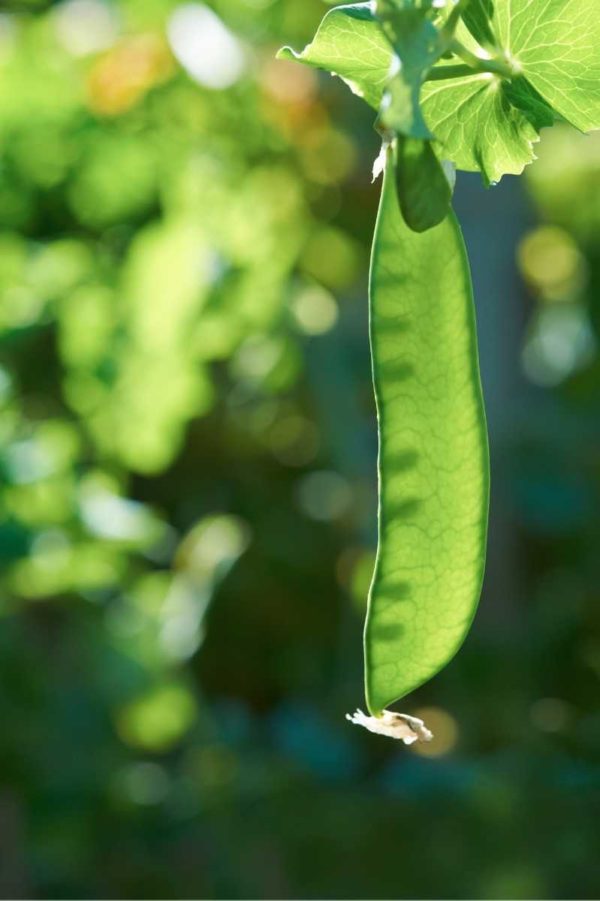
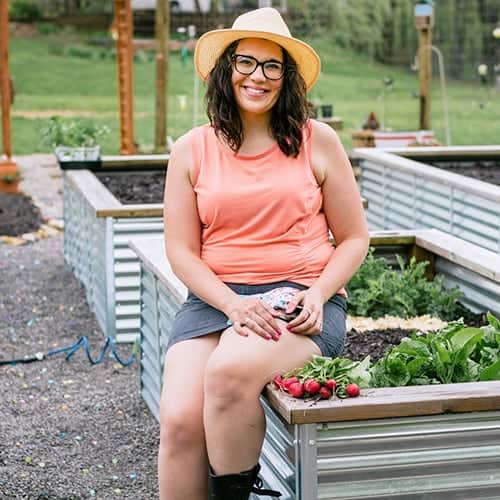
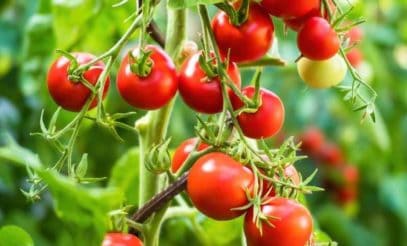

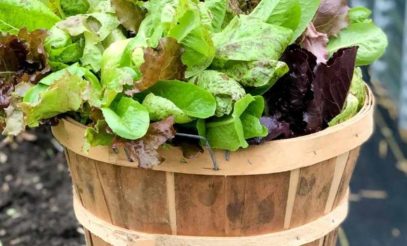
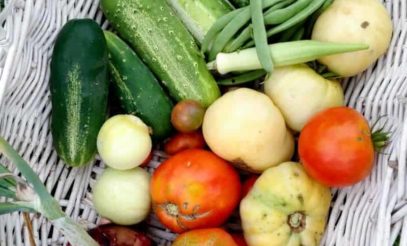
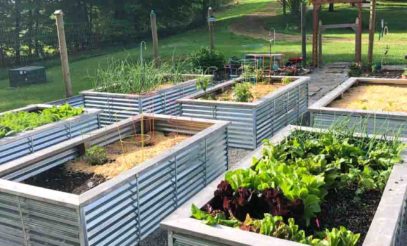
Greetings Cassie, have you ever tried Sraw Bale Gardening, I know they sell a product to condition your bale prior to planting, but can you prepare it yourself some how, with out buying this product?? Thank b you and have a Wonderful Day.
We unfortunately don’t have much experience with straw bale gardening!